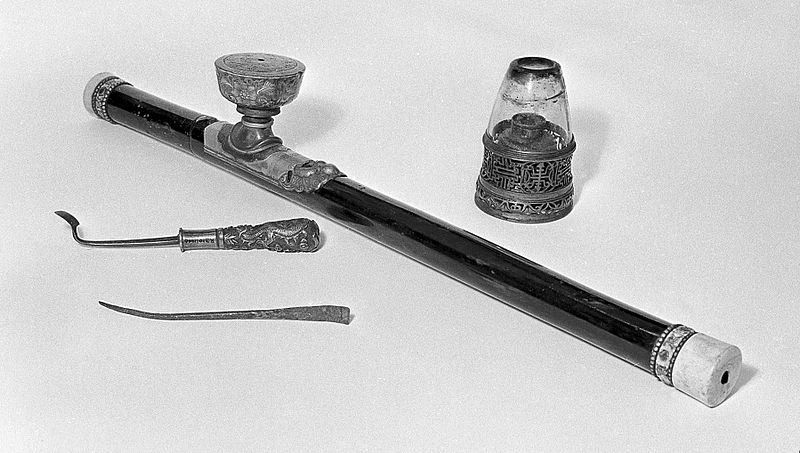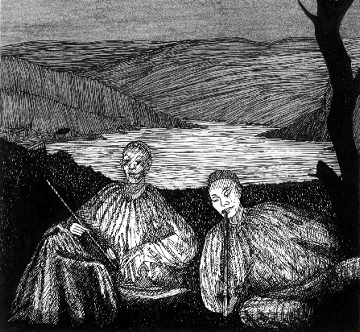Opium and its Paraphernalia
-
Opium was imported to American Chinatowns and labor camps, such as Yema-po, in small copper* boxes. Each box contained approximately 6 1/2 oz. of opium and cost around $8. The sides and lids of 18 of these opium boxes were uncovered at Yema-po.
The lids are embossed with Chinese characters indicating the name of the manufacturer/ exporter and the firm's address in China. The example on the right reads "Hong Kong, The Middle District." The name of the firm reads Zhi He Xing, and translate as "Harmony and Good Luck."
*Although these boxes are often described as being made of brass, a scanning electron microscope study of the Yema-po opium boxes by Marge Simkins in 1981 showed them to be composed of almost pure copper.
-

Smoking opium required a particular type of pipe called Yen Tsiang or "smoking pistol." The pipe stem was usually a 16-20 inch length of bamboo, one end open and the other end sealed. A ceramic bowl (Yen Low ) was inserted approximately six inches from the open end and attached to the pipe by a connecting flange and copper saddle.
In addition to the pipe a heat source was needed to ignite the opium. This usually was a small lamp (Yin Tene ) fueled by vegetable oil. A needle (Yen Hauck), on which to impale the opium for heating, and a small scraping tool or knife (Yen Tshi or Yen Shee Gow ) to dislodge the residue within the pipe and bowl was also used.
Pipe Bowls
Nineteen broken opium pipe bowls were found at Yema-po. All these bowls are hollow, globular in shape, have a tiny hole in the upper surface and are made of fired clay. Most are simple geometric shapes and composed of burnished orange clay.
Lion pipe bowl
In contrast to the simple orange bowls, some of the pipe bowls are quite beautiful and covered with symbols of China and its mythology. On this pipe bowl the three characters to the left of the lion stamp translate as "lion heeds cock," a phrase with unknown meaning.
Sampan pipe bowl
This six-sided pipe bowl is done in low relief. The intact panel shows a river scene with a sampan and reeds. The characters on the panel to the right of the sampan are Xiang xi which translate as "Xiang River," an area in Hunan Province known for its lush, picturesque landscapes.
The Xiang and Xiao Rivers were popular subjects for Chinese screen painters as early as the eighth century A.D. Traditionally the painter depicted the theme in eight panels called the "Eight Views of Xiang and Xiao." The Yema-po fragment may represent "Boats Returning from a Distant Shore." It is possible that each of the missing panels of this bowl had a relief design taken from the Xiang and Xiao style.
